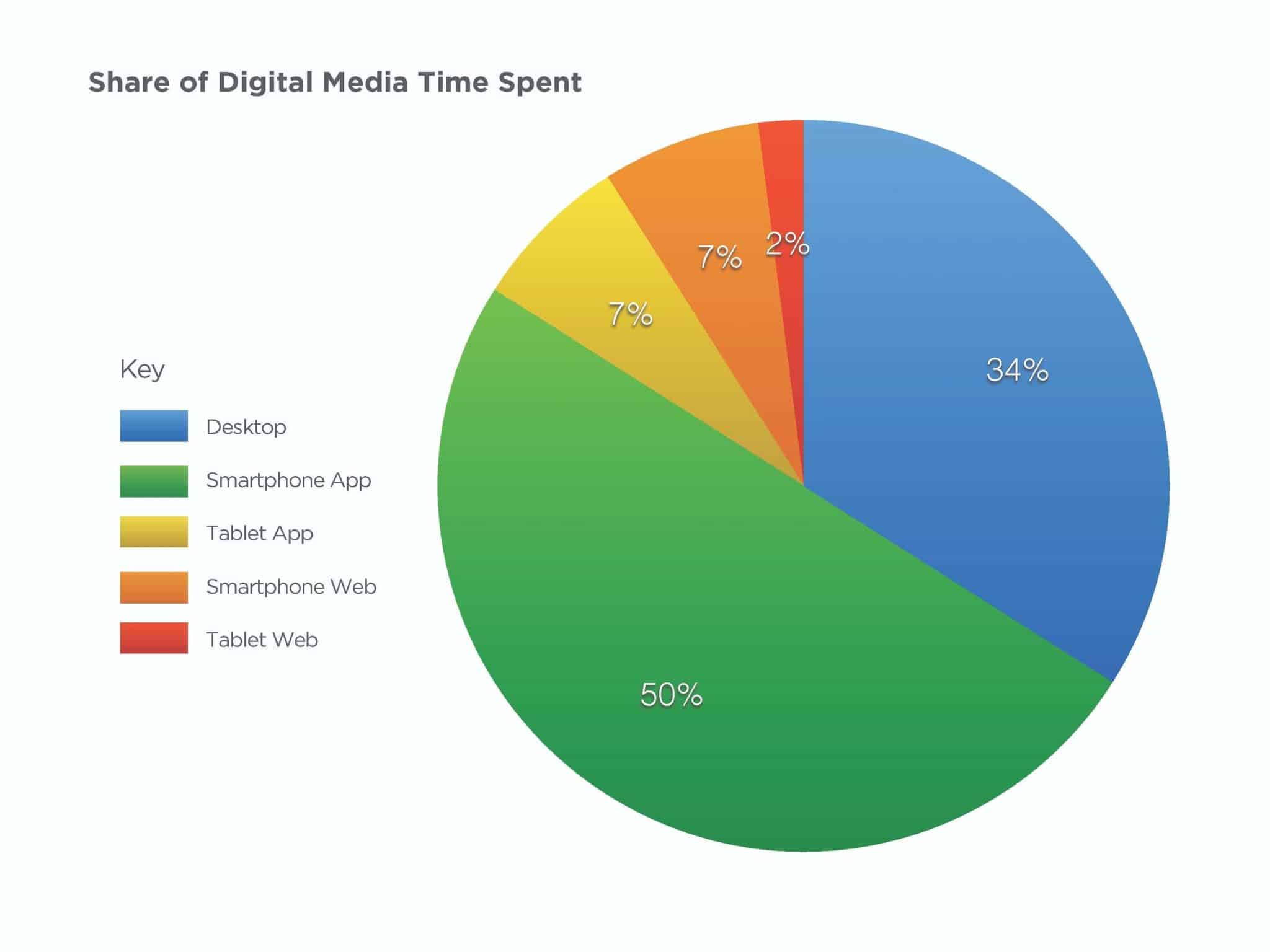
Are Mobile Apps Truly Dominating the Web?
Mobile device users have soared in numbers, now accounting for 66% of all digital media time spent in the U.S., and many countries are significantly higher than this. Today, the Internet is widely optimized for mobile users who love to enjoy most content through mobile-optimized websites and apps. If you think about it for a moment, a lot of people don’t really visit web pages through their phone/tablet browsers but rather use apps to access their social media or other services. In fact, close to 90% of smartphone usage is in-app, as opposed to the web. Or, to put it another way, 57% of all time spent on digital is on a mobile app.
As a consequence, the way people advertise their content is radically changing. Companies such as Google, one of the web’s biggest and most influential firms, are now starting to differentiate between mobile and desktop ads, offering more options to advertisers looking to reach out to a wider demographic. Now more than ever, advertisers have the opportunity to target their audience with an astonishing degree of detail. You can get to know a lot of information about the users you wish to advertise to, including their sex, location, interests, habits and the type of device that they will most likely use when viewing your ad.

Directing Mobile Advertising to the Correct Demographic
As you might expect, this tendency towards mobile apps is most pronounced with younger audiences with 18-24-year-olds spending fully two-thirds of all their digital time in mobile apps. Conversely, ages 65+ are only in phone apps 27% of the time, and desktop still dominates at 53% for them.
As such, it is important to be very tailored to your audiences by offering them the best visual/UX brand experience across the devices and applications that they use. Accepting that the majority of consumers under 64 will access your brand content through a mobile device, steps should be taken to optimize content for optimal viewing across mobile platforms and specifically within apps.
Advertisers that are truly integrated will perform best by understanding these implications and coordinating their media planning, messaging strategy, and creative execution accordingly. You wouldn’t expect to see new work in a double page spread, so if your marketing team is not presenting their digital creative from a mobile/app first perspective then you might want to question why.
The face of the web will continue to change, and as more and more users enjoy content through mobile devices, it is vital to becoming a part of and even lead this change to avoid letting your brand fall behind.